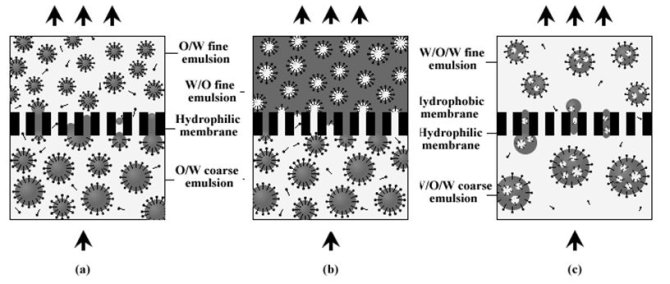Project
Premix emulsification systems
New methods for emulsification using microstructured systems like, cross-flow membrane emulsification and premix membrane emulsification have received much attention (see also Figure 1). In cross-flow emulsification, the emulsion is formed by pushing to-be-dispersed phase through a membrane into continuous phase, which has several advantages such as low shear stress, less energy requirement, uniform droplet size, and ease of design. However, a limitation in case of cross-flow emulsification is the low dispersed phase flux, and for this reason, premix emulsification is an attractive alternative to produce emulsions with high dispersed phase fraction, albeit that the size of the droplets is not as monodisperse as for cross-flow emulsification. Principally, in premix emulsification, a coarse emulsion is pushed through a porous membrane leading to a fine emulsion having smaller and rather uniform droplets, again at the expense of relatively low energy inputs. It is an interesting technique for the controlled production of small sized emulsions, and all kinds of related products.

Figure 1: Schematic representation of batch premix emulsification systems; a) simple emulsion without phase inversion, b) simple emulsion with phase inversion, c) double emulsion
The research will focus on the relationship between glass bead size and emulsion droplet size, food emulsion production and evaluation of emulsion properties, design of larger-scale set-up, and cleanability of the system.
References
E.A. van der Zwan, C.G.P.H. Schroën and R.M. Boom, Premix membrane emulsification by using a packed layer of glass beads, AIChE Journal, 54 (2008) 2190-2197.
Acknowledgement
This project is partially funded by Higher Education Commission, Pakistan
